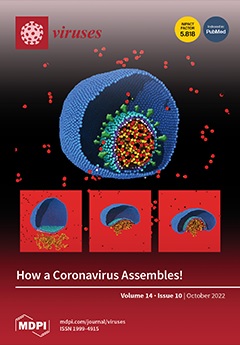Ver ítem
- xmlui.general.dspace_homeCentros e Institutos de InvestigaciónCICVyA. Centro de Investigación en Ciencias Veterinarias y AgronómicasInstituto de VirologíaArtículos científicosxmlui.ArtifactBrowser.ItemViewer.trail
- Inicio
- Centros e Institutos de Investigación
- CICVyA. Centro de Investigación en Ciencias Veterinarias y Agronómicas
- Instituto de Virología
- Artículos científicos
- Ver ítem
Origin of new lineages by recombination and mutation in avian infectious bronchitis virus from South America
Resumen
The gammacoronavirus avian infectious bronchitis virus (IBV) is a highly contagious respiratory pathogen of primary economic importance to the global poultry industry. Two IBV lineages (GI-11 and GI-16) have been widely circulating for decades in South America. GI-11 is endemic to South America, and the GI-16 is globally distributed. We obtained full-length IBV genomes from Argentine and Uruguayan farms using Illumina sequencing. Genomes of the GI-11 and
[ver mas...]
The gammacoronavirus avian infectious bronchitis virus (IBV) is a highly contagious respiratory pathogen of primary economic importance to the global poultry industry. Two IBV lineages (GI-11 and GI-16) have been widely circulating for decades in South America. GI-11 is endemic to South America, and the GI-16 is globally distributed. We obtained full-length IBV genomes from Argentine and Uruguayan farms using Illumina sequencing. Genomes of the GI-11 and GI-16 lineages from Argentina and Uruguay differ in part of the spike coding region. The remaining genome regions are similar to the Chinese and Italian strains of the GI-16 lineage that emerged in Asia or Europe in the 1970s. Our findings support that the indigenous GI-11 strains recombine extensively with the invasive GI-16 strains. During the recombination process, GI-11 acquired most of the sequences of the GI-16, retaining the original S1 sequence. GI-11 strains with recombinant genomes are circulating forms that underwent further local evolution. The current IBV scenario in South America includes the GI-16 lineage, recombinant GI-11 strains sharing high similarity with GI-16 outside S1, and Brazilian GI-11 strains with a divergent genomic background. There is also sporadic recombinant in the GI-11 and GI-16 lineages among vaccine and field strains. Our findings exemplified the ability of IBV to generate emergent lineage by using the S gene in different genomic backgrounds. This unique example of recombinational microevolution underscores the genomic plasticity of IBV in South America.
[Cerrar]

Autor
Marandino, Ana;
Vagnozzi, Ariel Eduardo;
Tomás, Gonzalo;
Techera, Claudia;
Gerez Miranda, Rocio Del Carmen;
Hernández, Martín;
Williman, Joaquín;
Realpe, Mauricio;
Greif, Gonzalo;
Panzera, Yanina;
Pérez, Ruben;
Fuente
Viruses 14 (10) : 2095 (Octubre 2022)
Fecha
2022-10
Editorial
MDPI
ISSN
1999-4915
Formato
pdf
Tipo de documento
artículo
Palabras Claves
Derechos de acceso
Abierto
 Excepto donde se diga explicitamente, este item se publica bajo la siguiente descripción: Creative Commons Attribution-NonCommercial-ShareAlike 2.5 Unported (CC BY-NC-SA 2.5)
Excepto donde se diga explicitamente, este item se publica bajo la siguiente descripción: Creative Commons Attribution-NonCommercial-ShareAlike 2.5 Unported (CC BY-NC-SA 2.5)


